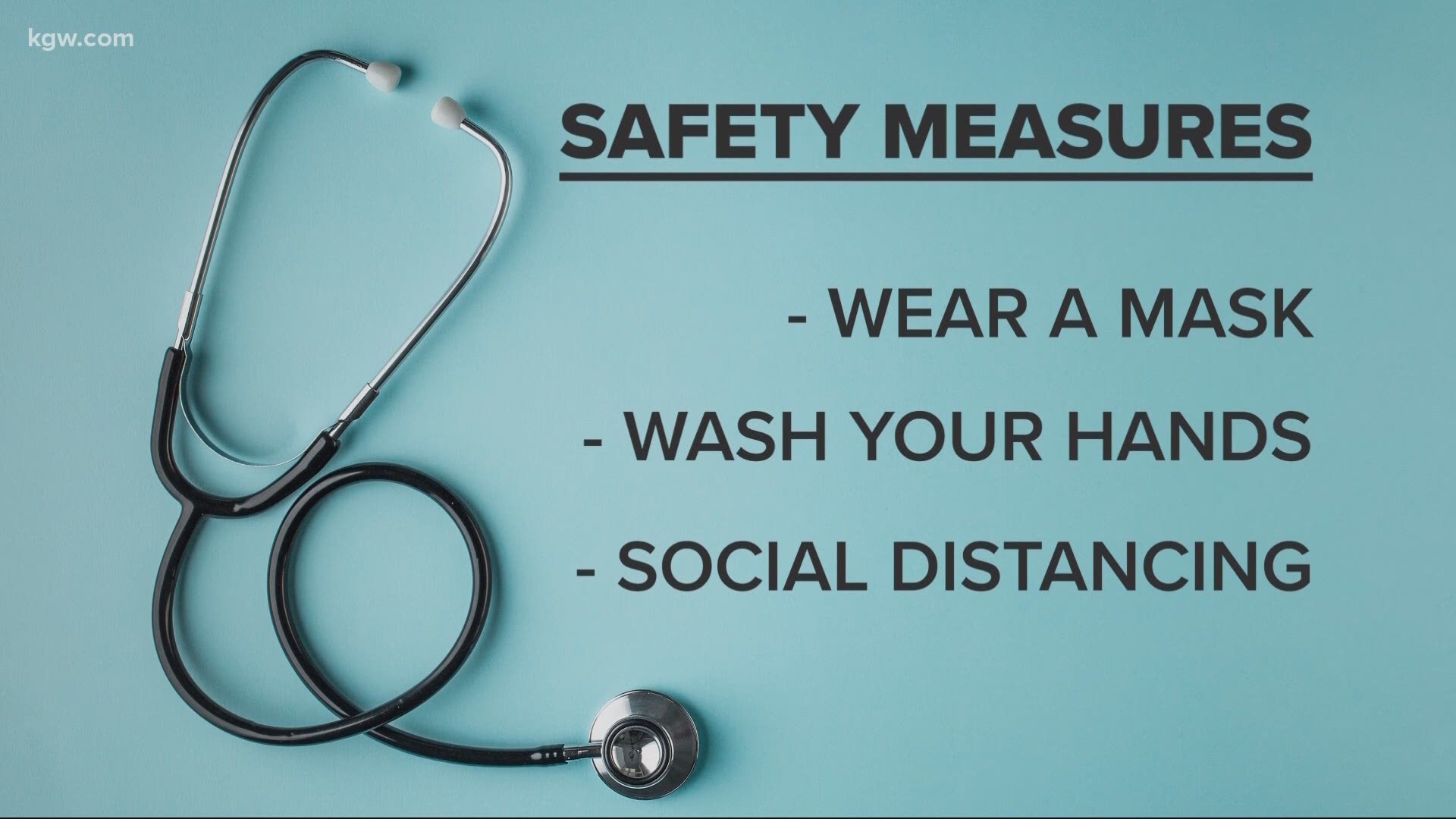PORTLAND, Ore. — With the number of COVID-19 cases rising in Oregon, many parents are nervous about sending their kids back to school. KGW decided to talk to a couple of pediatricians to get their take.
Dr. Allison Baynham and Dr. Dawn Nolt are both pediatricians and parents.
“I have a two-year-old daughter named Elodie. She is so funny and wonderful,” said Baynham who practices at Metropolitan Pediatrics.
She said Elodie is in daycare but if her daughter were of the age to attend elementary school, Baynham said she’d feel comfortable sending her.
“Today, yes I would if I felt comfortable with the plan they [the school district] had,” she said.
Baynham said safety is the priority and what parents decide should be dependent on their specific school district’s plan.
“That should at minimum include a plan for distancing […] really strictly enforced mask wearing, and a really strict exclusion policy. If a child does come to school with symptoms, what is the school going to do? What’s their plan?” said Baynham.
Dr. Dawn Nolt is a professor specializing in pediatric infectious diseases at OHSU who also practices at Doernbecher Children's Hospital. Like many parents, she is also paying close attention to her school district’s plans.
Her daughter is almost 13 years old and is headed into 7th grade.
“I come from the standpoint that I really feel it’s important for kids to be physically in school. So even though there’s not going to be an elimination of risk of COVID-19 in the schools, there are certain measures we can take to really reduce that risk,” Nolt said.
Those measures are the ones we keep hearing: wear a mask, wash your hands, and keep a physical distance.
While it may be more difficult for younger kids to wear a mask all day, Nolt said another option is clustering kids together and isolating groups of kids from one another.
“If a school can really do physical distancing and the other strategies really well, you could anticipate that a full time return to school can occur particularly if community activity of the virus is low. So, a lot of factors,” said Nolt.
She said it appears from modeling, that opening schools won't necessarily worsen COVID-19 infection rates in a community.
"Schools are going to be reflective of what communities are doing."
Nolt said given recent research that has shown children seem less likely to become infected, show symptoms, get severely ill, or transmit the virus, reopening schools may have a neutral affect on the spread of COVID-19.
Baynham said the data she's seen is mixed.
“Some early studies said ‘well maybe they’re not the super spreaders we thought they were.’ But then new data [is] always coming out saying we don’t know, maybe they are spreading it.”
Basically, things are changing all the time and what we know to be true now may change.
“We are getting new information on almost a daily basis,” said Baynham.
“Just because we want it to be over, it’s not over. The best thing we can do is to try and contain it by preventing the spread. So wearing your mask, washing your hands, maintaining that six-foot distance from others, and if you know that you’re feeling sick or have symptoms, not going out.”

